Dear Readers, Ginseng root has been used as a remedy in Far Eastern medicine for thousands of years. The miracle tuber, which is nicknamed the all-healing root, is said to strengthen the body, improve performance, and counteract the aging process.
You can find out here what effects ginseng has and how to use it correctly.
When it came to Europe in the 17th century, ginseng was temporarily more valuable than gold. No wonder, as the panacea was celebrated as a miracle drug that could treat numerous ailments. You will find out exactly what ginseng is below.
Interesting facts about Panax Ginseng
In traditional Chinese medicine, the tuber has been used for various ailments for over 2,000 years, and at that time it was also considered a source of eternal youth.
The small, human-like root eventually reached Europe through Dutch sailors, where it was temporarily more expensive than gold. This was not just due to the medicinal properties that the tuber was said to have.
In nature, wild ginseng takes over 100 years to fully develop the sought-after root. In Europe, therefore, only nobles and wealthy people were afforded the valuable universal root.
It was only in the 20th century that ginseng roots finally experienced a real boom in the rest of society.
The plant is hardly noticeable at first glance: the medicinal plant, which is up to 80 centimeters high, has inconspicuous yellowish flowers that are not used. Instead, their strength lies in the roots, which are up to twelve centimeters long and two centimeters thick, and which form numerous secondary branches.
Thanks to new varieties, the tubers can be harvested after just a few years.
The sought-after plant originally comes from the mountain forests of East Asia, where it thrives on shady slopes. Even today it is mainly cultivated in Asia; ginseng is particularly cultivated in Korea, Japan, and northeast China.
White ginseng versus red ginseng
We mainly differentiate between two types of prepared ginseng: red and white. However, these are not different plant species, but rather different processing methods.
The white ginseng, which is better known in this country, is dried directly after being hand-harvested and thus retains its natural color. The red version, on the other hand, is created by first treating the root with steam and then drying it.
In this country, medicine prefers to use white ginseng, which comes mainly from Korea and is also known as Korean ginseng.
Ingredients of Ginseng
Since only the ginseng roots are used in medicine, it is hardly surprising that they alone contain the sought-after active ingredients. The triterpene saponins present in the roots are crucial for the claimed effects.
More precisely, these are ginsenosides. They make up around three percent of the total. In addition, small amounts of essential oils, peptidoglycans, and polyacetylenes can be found in the miracle tuber.
Below you will find out how these ingredients work and what makes them so special.
Effects of Ginseng
Far Eastern doctors recognized over 2,000 years ago that the human-like ginseng root can reduce numerous complaints and increase performance.
Many studies that come from Asia are difficult to evaluate, which is why the supposed effects are assessed very differently in this country.
Nevertheless, laboratory tests and small studies on human subjects have been able to confirm numerous effects of the special ingredients in ginseng, especially ginsenosides.
Among other things, it was found that the miracle tuber has an anti-inflammatory effect, can lower blood sugar levels and stimulate the immune system.
In addition, ginseng root is said to have potency-enhancing effects, although these have not yet been clearly proven.
As a proven tonic
If nervousness, inner unrest, or constant stress puts a strain on the body, it can react with a weakened immune system and therefore illnesses.
Tonics are preparations that are intended to strengthen the body or certain organs and thus prevent possible illnesses.
The tuber not only strengthens the immune system, it also stimulates the metabolism and supports the body’s own resistance. Ginseng can sometimes arm the body against stress and prevent states of exhaustion.
Typical symptoms of a weakened body are lack of strength, weakness, and listlessness. As a real pick-me-up, ginseng root can counteract these symptoms and strengthen the entire body.
In case of stress and constant strain
Whether it’s long-term professional or personal stress, many factors today contribute to the fact that we suffer from constant stress.
Sooner or later this can affect your physical health or lead to burnout.
In addition to improved time management and meditation, ginseng root can also help us to be better equipped to deal with stress.
Experiments on animals have shown that the tuber increases the animals’ resilience under stress and thus makes them more resistant to possible consequences.
Studies have also been carried out on humans, but these are not considered officially confirmed due to a small number of test subjects.
Among other things, it was found that ginseng not only improved the ability to concentrate and memory, but also the general well-being of the test subjects.
The root puts them in a better mood while increasing both physical and mental performance. However, studies on competitive athletes have not been able to confirm these effects.
Supportive against fatigue syndrome
Not only the disease itself but also the chemical agents used against the cancer and other factors can trigger the so-called fatigue syndrome in cancer patients.
As the illness progresses, physical, emotional, and mental exhaustion occurs, which often puts more strain on those affected than the actual illness already does.
The syndrome can also be accompanied by problems with concentration and memory.
Ginseng has been proven to counteract fatigue syndrome or significantly alleviate it. The root also supports the recovery phase after overexertion and can shorten the regeneration time.
Against free radicals
So-called free radicals are oxygen compounds that occur naturally in the body.
However, intense sun exposure, smoking, or alcohol consumption can cause the number of these free radicals to increase rapidly, meaning that the body can no longer fight them on its own.
Among other things, these dangerous oxygen compounds cause cells to be irreparably damaged and the skin to age more quickly so avoid such habits.
Ginseng acts like an antioxidant against these free radicals and thus protects the cells from permanent damage. In general, the root improves the body’s resistance.
To protect the liver
Ginseng is processed in the liver. Here the root activates important cell metabolism processes, in which the liver, among other things, produces increased proteins.
Ginseng root is said to have a detoxifying effect on the liver. This assumption is based on the fact that the miracle tuber has an activating effect on the organ.
For menopausal symptoms
If a woman goes through menopause, this process can be accompanied by unpleasant side effects. Those affected often complain of constant fatigue, hot flashes, sleep problems, and even depression.
There are some chemical agents that can improve these symptoms and are used as therapy. Ginseng, on the other hand, is a completely natural remedy.
It can improve mood, increase performance, and counteract constant tiredness and irritability.
Risks when using ginseng
Despite the numerous positive and strengthening effects of ginseng root on the body. There are some side effects or risks that you should be aware of before taking the remedy.
The use of ginseng is generally only intended for adults, as there are no studies yet on the long-term effects of the root.
For this reason, you should ideally only take the miracle tuber for three to four weeks at a time but not longer than three months. After a longer break, you can take the root again for three months in a row.
In principle, ginseng root is tolerated very well by the body, but taking it can cause discomfort in particularly sensitive people. Among other things, those affected complain of gastrointestinal problems and insomnia.
Caution is also advised for people who suffer from high blood pressure or diabetes. If you are affected by this, you should definitely discuss taking it with your doctor beforehand.
In addition, ginseng can potentially change blood clotting, which is why you need to be careful if you are currently taking blood-thinning medication.
However, this is only a precautionary measure as the evidence is still very thin and there are no scientific studies available.
In addition, ginseng can increase the effects of coffee and other caffeinated drinks on the body. Despite the possible risks and side effects, the medicinal root is very digestible and can develop its positive effects within a few weeks.
Applications with ginseng
The coveted root can be used in a variety of ways, depending on personal preference. Ginseng is available, among other things, as crushed root for tea infusions, as a powder, or processed into various finished products such as extracts.
As a dietary supplement
Ginseng in powder form is particularly popular. This can either be taken directly, processed further, or used in capsule form. The powder is found in many ready-made ginseng preparations and is already optimally dosed.
Special preparations can also contain other nutrients or vitamins. The important B vitamins are often used here.
Ginseng tea
Another popular use for the tuber is the easily digestible ginseng tea. You can easily make this yourself, all you need is ginseng powder and hot water.
Use around six grams of the powder for 300 milliliters of boiling water. Mix this into the hot water while stirring and let the whole thing steep for at least five, a maximum of ten minutes.
Then all you have to do is strain the tea and then enjoy it.
Note: If any health issue is there then before using the above remedies consult your doctor for advice.

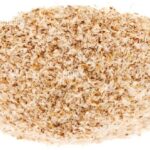
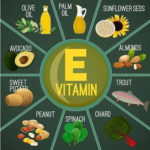
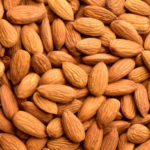
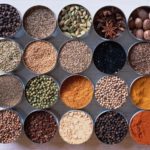
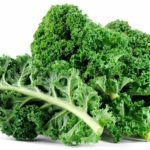
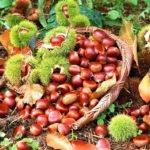
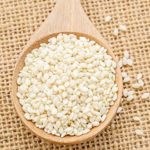





I was recommended this website by my cousin. I am not sure whether this post is written by him as nobody else know such detailed about my difficulty. You are wonderful! Thanks!